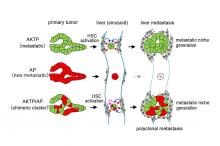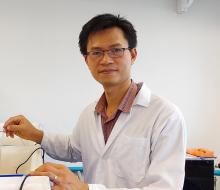Medicine & Healthcare Pathology
News

17 Jan 2023
In a study recently published in Cancer Science researchers from Kanazawa University show how some intestinal cancer cells lose their ability to spread as they divide and can be eliminated as the cancer grows.
08 Jul 2021
Our brain has no lymphatic system; however, it does have fluid flow, which is believed to play a role in removing waste from the brain. However, the fluid's point of origin and fluid flow is still unclear. The “multi-scale stable isotopes imaging” project in Hokkaido University aims to solve this mystery using advanced technology.
“We would not have been able to perform this study without Hokkaido University’s MRI technology and the isotope microscope,” said the project’s PI, Professor Kohsuke Kudo of the Department of Radiology, Faculty of Medicine.
12 Feb 2021
In a study published in Nature Communications, cancer researchers at Kanazawa University identify mechanisms by which malignant tumor cells extend their toxicity to distinct cell types and in turn help them spread.
Events
Sorry, nothing coming up for this discipline
Researchers
Dr. Dong currently works at the Asian Institute of Technology. He does research in Aquaculture, Pathology, Infectious Diseases, and Aquatic Bioscience.
Giants in history
In 1915, Koichi Ichikawa along with pathologist Katsusaburo Yamagiwa became the first to prove that chronic exposure to chemicals can cause cancer.






